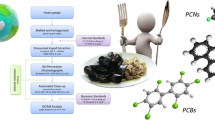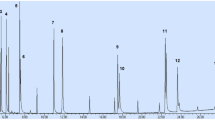Abstract.
Contamination of marine invertebrates by aromatic compounds (ACs) can occur from a variety of environmental sources, both natural and anthropogenic. Invertebrate species bioaccumulate ACs because they metabolize and eliminate them at a much slower rate than do vertebrates, such as fish. We have developed a high-performance liquid chromatography (HPLC) UV fluorescence screening method that measures ACs in invertebrate tissues. Screening methods have proven to be useful in response to environmental emergencies (e.g., oil spills) and in environmental monitoring because they are more rapid and less expensive than detailed analyses. This method was validated using three species of bivalves and lobster hepatopancreas and tail muscle as test samples. The AC screening method at naphthalene, phenanthrene, and benzo[a]pyrene wavelength pairs showed good correlation to GC/MS results. The method was also used successfully in response to the North Cape oil spill, off Narragansett, Rhode Island.
Similar content being viewed by others
Author information
Authors and Affiliations
Additional information
Received: 27 July 1998/Accepted: 18 November 1998
Rights and permissions
About this article
Cite this article
Hufnagle Jr., L., Camarata, S., Ernest, D. et al. Development and Application of a High-Performance Liquid Chromatography Screening Method for Aromatic Compounds in Invertebrate Tissues. Arch. Environ. Contam. Toxicol. 37, 220–226 (1999). https://doi.org/10.1007/s002449900508
Issue Date:
DOI: https://doi.org/10.1007/s002449900508




